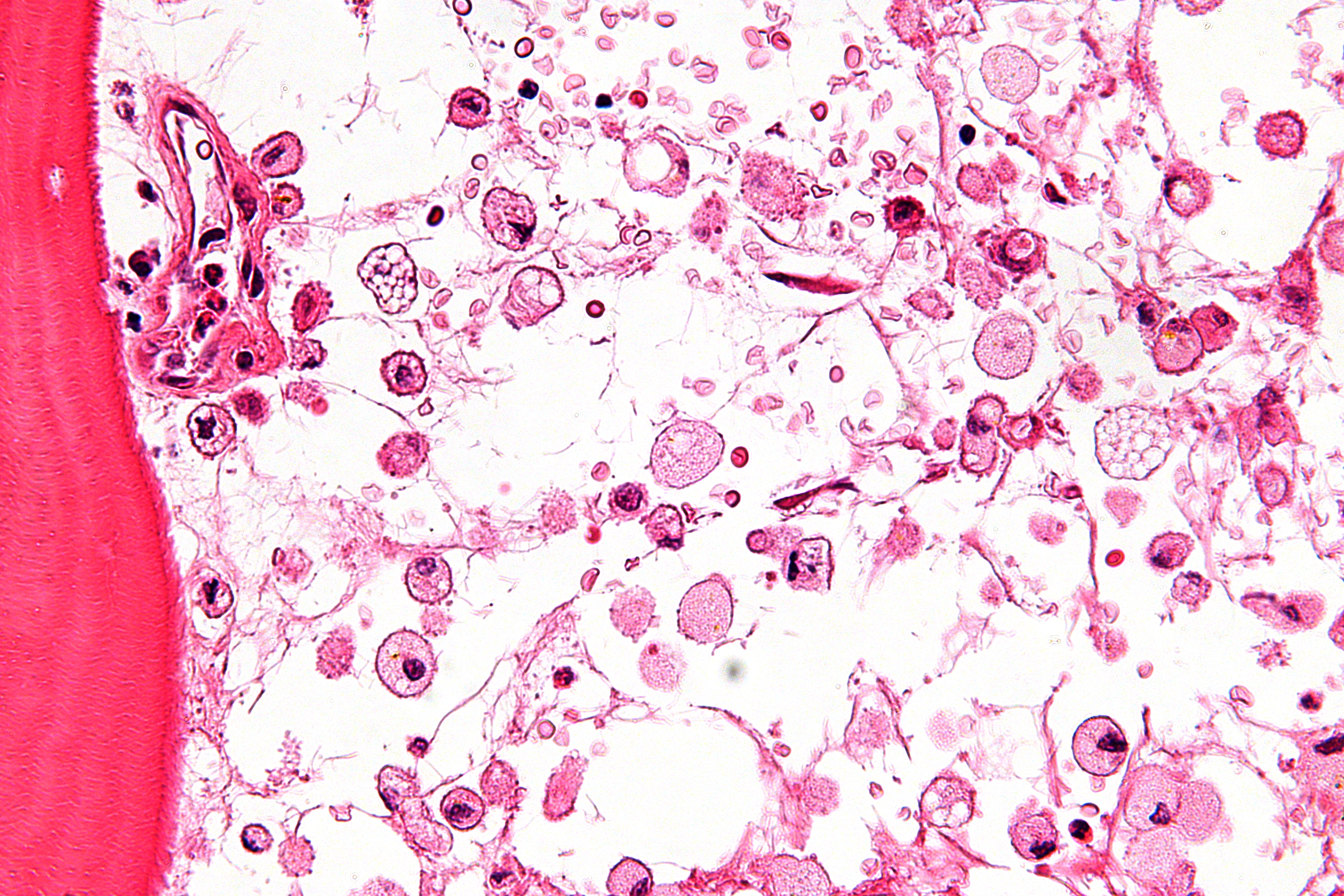WBR0124
| Author | [[PageAuthor::William J Gibson (reviewed by Yazan Daaboul, M.D.)]] |
|---|---|
| Exam Type | ExamType::USMLE Step 1 |
| Main Category | MainCategory::Biochemistry, MainCategory::Genetics, MainCategory::Histology |
| Sub Category | SubCategory::Cardiology, SubCategory::Hematology |
| Prompt | [[Prompt::A 9-year-old girl is brought by her parents to the emergency department for pain in her abdomen and left thigh. Her thigh pain developed over the past several days, and today she is unable to walk because of it. She has a history of anorexia and abdominal bloating for the past several years. She recalls one previous incident of pain in her thigh. On physical examination, the abdomen is distended, the spleen is palpable 4 cm below the costal margin and the liver is tender to mild palpation. The left thigh retains full range of motion, but is painful with knee extension and deep palpation. There is no family history of sickle cell anemia/trait and the patient tests negative for HbS by hemoglobin electrophoresis. Peripheral blood smear reveals marked microcytosis with anisocytosis. Bone marrow biopsy shown below confirms the diagnosis. Which of the following is the most likely underlying defect in this patient? |
| Answer A | AnswerA::Mutation in ''HFE'' gene |
| Answer A Explanation | [[AnswerAExp::HFE gene is mutated in hereditary hemochromatosis.]] |
| Answer B | AnswerB::Deficiency of glucocerebrosidase enzyme |
| Answer B Explanation | [[AnswerBExp::Glucocerobrosidase (GBA) gene is mutated in Gaucher’s disease.]] |
| Answer C | AnswerC::Deficiency of galactocerebrosidase enzyme |
| Answer C Explanation | [[AnswerCExp::Galactocerebrosidase gene is mutated in Krabbe disease.]] |
| Answer D | AnswerD::Deficiency of alpha-galactosidase A enzyme |
| Answer D Explanation | [[AnswerDExp::Alpha-galactosidase A gene is mutated in Fabry disease.]] |
| Answer E | [[AnswerE::Deficiency of hexosaminidase A enzyme]] |
| Answer E Explanation | [[AnswerEExp::HEXA gene is mutated in Tay-Sachs disease. It leads to deficiency in Hexosaminidase A enzyme.]] |
| Right Answer | RightAnswer::B |
| Explanation | [[Explanation::Gaucher's disease is an autosomal recessive genetic disease characterized by cellular accumulation of fatty substances within cells. The abdominal pain in this patient is caused by the accumulation of lipids in the liver and the spleen which can cause painful distension of these organs. Her acute leg pain is an example of a bone crisis caused by Gaucher's disease. In these episodes, buildup of lipids in the bone marrow compromises blood flow to the bone and causes very severe pain that lasts for hours to weeks. In some bone crises, ischemia of the affected region may cause tissue death and may lead to fractures.
Gaucher's disease is the most common lysosomal storage disease. It is a form of sphingolipidosis (a subgroup of lysosomal storage diseases), as it involves dysfunctional metabolism of sphingolipids. It is caused by a deficiency of glucocerebrosidase, whose normal function is to catalyze the breakdown of glucosylceramide, a minor component of red blood cell and white blood cell cell membranes. The macrophages that clear these cells are unable to eliminate the waste product. These products accumulate in fibrils and turn into Gaucher cells, which appear on light microscopy to resemble "crumpled/wrinkled tissue paper". The disorder is characterized by bruising, fatigue, anemia, thrombocytopenia, and hepatosplenomegaly. |
| Approved | Approved::Yes |
| Keyword | WBRKeyword::Tissue paper macrophages, WBRKeyword::Gaucher’s disease, WBRKeyword::Gaucher disease, WBRKeyword::Crumpled tissue paper, WBRKeyword::Tissue paper, WBRKeyword::Tissue-paper, WBRKeyword::Wrinkled tissue paper, WBRKeyword::Genetics, WBRKeyword::Sphingolipidosis, WBRKeyword::Lysosomal storage disease, WBRKeyword::Metabolism, WBRKeyword::Lipids |
| Linked Question | Linked:: |
| Order in Linked Questions | LinkedOrder:: |
